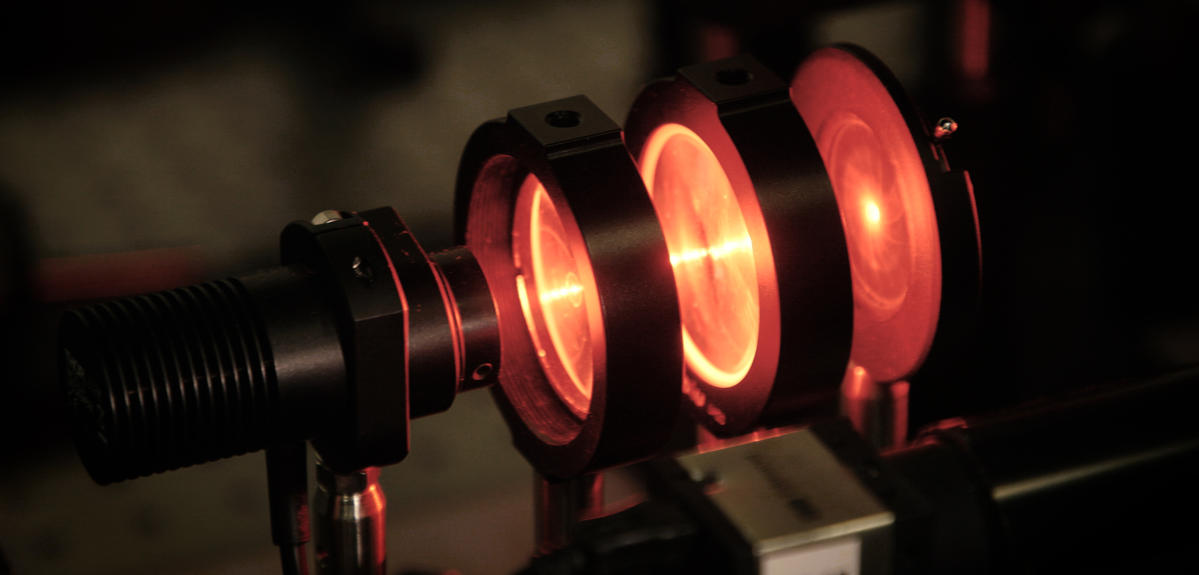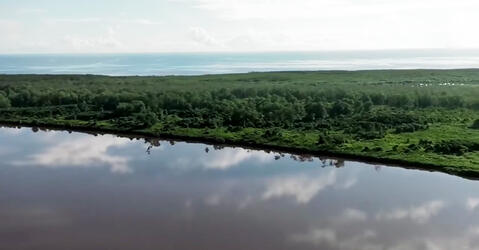You are here
Every second of the day, 250,000 text messages, 60,000 Google searches, and 9,000 photos are shared around the world. Storage technology is constantly trying to keep up with demand. Since the 1950s, improvements to technology have increased storage density a billion fold.
The development of the internet was made possible thanks to these advancements. Today our hard drives, servers, and data centers face the same problem: how to save more information on smaller surfaces.
The Jean Lamour Institute in the East of France is home to researchers imagining the materials of tomorrow thanks to a very unique setup. To get a closer look, one must wear a special suit to keep from contaminating the air with dust. Danielle Pierre helped create this platform, christened DOME, a 70m long tube on which 28 high precision instruments have been mounted. Their vacuum sealed conditions enable the creation of new materials at the atomic level. Scientists use common atoms like iron, cobalt, or nickel, but assemble them in order to produce new properties. These materials can improve solar panels, or increase the performance of tomorrow’s magnetic memory.
Danielle Pierre
We’ll move sample materials through this transfer tunnel. We place a base layer in these containers. Then we deposit the sample we want to study later in various machines. So we’ll be able to create what will be hybrid materials using a variety of different depositing techniques. We’ll be able to study them, define their characteristics, see their structure. We do all this under ultrahigh vacuum conditions.
Today, in order to miniaturize and increase the storage capacity of magnetic materials, scientists are looking to code at the level of electrons. But the speed of writing and reading this information is up against the limitations of today’s mechanical elements. Physicists have conceptualized powerful lasers fast
enough to code and decode our data on magnetic material. This could also reduce energy needs for our ever-multiplying servers.
Stephane Mangin
We’re trying to store more and more information in ever smaller spaces, and we want to do it faster. It’s an evolution that’s taken place over 20 or 30 years, but what’s become a bigger concern is the effect of our energy usage on global warming. Sending an email, watching a video uses energy. Today the internet makes up 5% of global energy consumption. As we develop the internet of things, we’ll generate an absolutely enormous quantity of information. So we need to increase storage speed, while reducing its physical size and energy use.
To prove the efficiency of these magnetic nanomaterials, scientists must send samples to their collaborators in the outskirts of Paris. The C2N, a nanotechnology research center has the cutting edge tools to work with these new materials. They are collected in one of the largest clean rooms in Europe. These machines can manipulate the materials on a level one thousand times finer than a human hair. The scientists will also be able to observe the materials’ stability which needs to store information for a minimum of ten years.
Lisa Herra Diez
The first step is to characterize the materials we receive at the level of their magnetic and electrical properties. After we’ve done that we move on to nanofabrication, which has multiple stages. We have a form design stage, from which we enter the stage of applying that form to the material. From there we move onto the testing stages in the clean room, where we proceed with manufacturing. Then we’ll test its magnetic and electrical properties again. Ultimately it won’t maintain the same properties that we originally received from the team of the Jean Lamour Institute.
While this research revolves around fundamental science, its application is already being considered by a number of industries struggling to handle our growing data production. Today’s 0’s and 1’s will grow exponentially with the development of robotics and automated cars, steadily becoming an environmental problem.
Since you started watching this film, over 9 billion gigabytes of information were produced globally.
Faster and Greener Data Storage
About 90% of the digital information that exists today was created in the past two years. Finding new materials able to capture this expanding digital world—and that are less energy-hungry—has become a priority for many research laboratories around the world. The Jean Lamour Institute in the East of France has set up state-of-the-art nanotechnology equipment to tacle this challenge.
Stéphane Mangin (Université de Lorraine)
Institut Jean Lamour
CNRS / Université de Lorraine
Liza Herrera Diez (CNRS)
Centre de Nanosciences et de Nanotechnologies (C2N)
CNRS / Université Paris-Sud / Université Paris-Saclay





